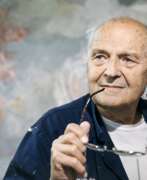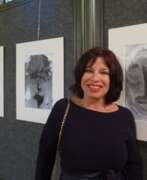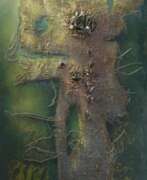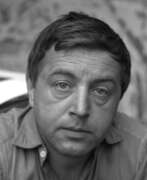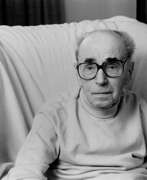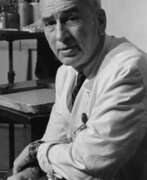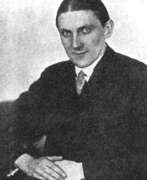Czech Republic Surrealism
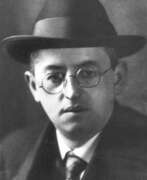

Josef Čapek was a Czech artist, writer, and journalist. He was the younger brother of writer Karel Čapek. Josef Čapek studied at the School of Applied Arts in Prague and later in Paris, where he was influenced by Cubism and Surrealism.
Čapek was a prolific artist, working in various mediums including painting, printmaking, and illustration. He is perhaps best known for his work in the area of puppetry, having created a number of puppet shows that were popular in Czechoslovakia during the 1920s and 1930s. His puppets were known for their expressive faces and whimsical designs.
Čapek was also a writer and journalist, and he wrote plays, essays, and articles for various newspapers and magazines. He was a member of the Czechoslovakian avant-garde group Devětsil, which promoted modern art and literature in the country.
During World War II, Čapek was arrested by the Nazis for his anti-fascist views and was sent to the Bergen-Belsen concentration camp. He died there in 1945, just weeks before the camp was liberated by Allied forces.
Čapek's legacy as an artist and writer is significant, and he is considered one of the most important Czech artists of the 20th century. His work is represented in many collections around the world, including the National Gallery in Prague and the Museum of Modern Art in New York.
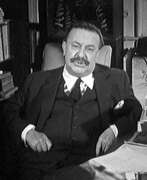

Adolf Hoffmeister (1902-1973) was a Czech artist, writer, journalist, playwright, translator, and diplomat, renowned for his multifaceted contributions to culture and art. His early career saw him collaborate with significant figures in the art world, including Philippe Soupault and Jaroslav Ježek. In 1928, Hoffmeister made his mark with a solo exhibition in Paris and became involved in various literary and artistic publications, such as Lidové noviny and Literární noviny.
Hoffmeister's art often intersected with his political views. He set up the anti-fascist magazine Simplicus in the 1930s and was a member of the Mánes Association of Fine Arts, where he defended the anti-Nazi artwork of John Heartfield. His life was dramatically affected by World War II; fleeing Nazism, he was interned in Paris and a Moroccan concentration camp before reaching New York in 1941. After the war, he returned to Prague and engaged in diplomacy and academia but faced political ostracization following his pro-reform activities in 1968.
Hoffmeister's work in collage was notable, especially his illustrations for Jules Verne's "Around the World in Eighty Days." He was also known for his libretto for the children's opera "Brundibar" and translating James Joyce’s "Anna Livia Plurabelle." His pieces, such as "Demonstration" (1963) and "Greek village by Syrakus" (1960), are preserved in archives like the Ruth and Marvin Sackner Archive of Concrete and Visual Poetry, illustrating his unique approach to visual storytelling.
For collectors, auctioneers, and art and antiques experts, Hoffmeister's works represent a compelling blend of artistic innovation and historical context. His legacy continues to inspire, and keeping informed about exhibitions or sales of his work is essential for those interested in 20th-century European art and literature.
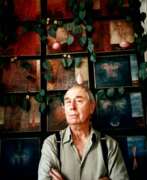

Josef Lehoucka is a Czech surrealist and abstractionist painter.
A close connection between realism and fantasy is a characteristic feature of Josef Lehoucka's paintings. In his youth he was a factory worker, a crane operator, which was reflected in his visual art. Lehoucka often painted fantastically realistic paintings, which he complemented with industrial motifs. His past experiences are recalled in replicas of machines, tongs, and cylinders, geometrized and incorporated into abstract compositions. Against this mechanized reality, however, the Surrealist tradition is strong, bringing elements of chance and the unexpectedness of dreamlike objects and landscapes into the paintings.
Josef Lehoucka's works are represented in the collections of the National Gallery of Prague, the Central Czech Gallery of Prague and others.


Ferdinand Staeger was a Czech-born German symbolist painter and graphic artist, illustrator and fabric designer.
Staeger studied at the School of Technical Design in Brno and then the School of Applied Arts in Prague, from 1908 he lived in Munich and collaborated with the magazine Jugend. He was a participant in the First World War, his war drawings are characterized by humanity. After the war he illustrated books by Gerhard Hauptmann, Josef von Eichendorff, Eduard Mörike and Adalbert Stifter with great success.
During the Third Reich, Staeger collaborated with the authorities by painting several propaganda pictures, for which he was awarded the title of professor. In 1943 he lost his home in Munich to Allied bombs and many works were lost.
After World War II, he painted in an impressionist style, creating paintings of mythical, mystical, symbolic and religious themes. Many works belong to the genre of "magic realism". Staeger is also known as a tapestry designer, master of etching and ex-libris, and was a member of the Association of German Artists. His wife Sidonie Springer (1878-1937) was also a painter and graphic artist.
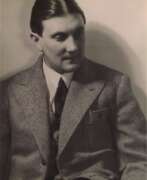

Jindřich Štyrský was a Czech artist, photographer, poet, and writer. He is best known for his contributions to the Surrealist movement in Czechoslovakia during the 1930s and early 1940s.
Štyrský initially trained as a painter, but he soon became interested in photography and began experimenting with the medium in the early 1920s. He became associated with the Czech Surrealist Group in the mid-1930s and became one of its leading figures, alongside fellow artist and writer Toyen.
In addition to his photography, Štyrský was also a prolific writer and poet. He published several books of poetry.
Štyrský's photography is characterized by its surreal and dreamlike qualities, often featuring distorted figures and strange juxtapositions of objects. He also produced a series of photomontages, which combined different photographic elements to create unsettling and enigmatic images.
During World War II, Štyrský was persecuted by the Nazi regime for his art and writings. His work has since been recognized for its contribution to Surrealism in Czechoslovakia and its unique blend of photography, painting, and literature.


Josef Sudek was a Czech photographer known for his poetic images of Prague and its surroundings. He initially studied bookbinding before becoming interested in photography.
Sudek is known for his use of the large format camera, which allowed him to create highly detailed and nuanced images. He often photographed still lifes, landscapes, and architecture, but his most iconic images are his atmospheric images of Prague, which he captured over the course of several decades.
Sudek's photography is characterized by its emphasis on light, shadow, and texture, and his images often have a dreamlike or poetic quality. He also experimented with different printing techniques, including platinum printing, which gave his photographs a soft and velvety texture.
Despite facing numerous challenges throughout his life, including losing an arm in World War I and facing political persecution during the Communist regime in Czechoslovakia. Today, he is considered one of the most important photographers of the 20th century, and his work is held in major collections around the world, including the Museum of Modern Art in New York and the National Gallery in Prague.
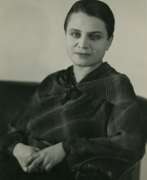

Toyen, born Marie Čermínová, was a prominent Czech artist known for her significant contribution to the Surrealist movement. Her work challenged conventions and explored the depths of the subconscious.
Toyen was known for her unique and evocative style, combining elements of fantasy, eroticism and dreams. Her work often features enigmatic figures, distorted landscapes, and symbolic motifs, executed with meticulous detail and a sense of mystery. She utilised a variety of techniques including painting, drawing and printmaking, thus demonstrating her versatility and artistic skill.
Throughout her career, Toyin collaborated with other Surrealist artists, including André Breton and Salvador Dalí. She actively participated in Surrealist exhibitions and contributed to various publications, demonstrating her artistic vision and ideological stance.
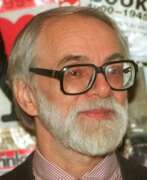

Karel Trinkewitz was a German-Czech artist, cartoonist and writer.
Karel's family was persecuted in the 1930s and 40s in Bohemia and Germany due to racial persecution, and as a half-Jew it was difficult for him to get an education at all. After World War II, Karel Trinkewitz worked in the Czech Republic for ten years as a writer, graphic artist and cartoonist, and from 1961 also as an editor of various cultural magazines. Shortly after August 21, 1968, as an active participant in the Prague Spring, he lost his job and eventually, after political unrest and relocations, had to move permanently to Germany.
In painting Trinkewitz was fascinated by the work of Salvador Dali, he also practiced calligraphic drawing and collage. In general, collage is a typical and basic creative expression for him.
